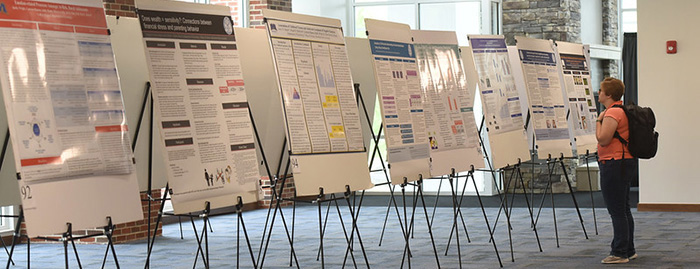Files
Download Full Text (2.2 MB)
Description
Microfungi are a vital part of ecosystems as they help with key processes, such as carbon and nutrient cycling, especially through the actions of mycorrhizal and saprotrophic members (Nuñez Otaño et al., 2015, 2021; Willis et al., 2018). Microfungi can also be good indicators of plant biodiversity in an area because many fungal taxa are host-specific (Rutten et al., 2021; Francioli et al., 2021; Hu et al., 2021; Wijayawardene et al., 2022 ). Despite being crucial components in ecosystems, they are often overlooked. In the fossil record, microfungi have a high preservaon rate and they are often preserved close to the original substrate they were deposited in. This makes them an important proxy for understanding local past ecological and climatological conditions (Romero et al., 2021, O’Keefe et al., 2017). The Fungi in a Warmer World project seeks to use fossil fungal assemblages to study changes in biodiversity during the Miocene Climate Opmum (MCO), a period of peak warming that closely mirrors current and projected warming trends (Steinthorsdotter et al., 2021). The current atmospheric CO2 concentraon is around 420 ppm but is rapidly approaching the MCO average of 450-550 ppm (Steinthorsdotter et al., 2021).
Publication Date
4-2022
Disciplines
Arts and Humanities | Business | Education | Engineering | Higher Education | Life Sciences | Medicine and Health Sciences | Physical Sciences and Mathematics | Social and Behavioral Sciences
Recommended Citation
Fairchild, J.; Romero, I. C.; Nunez Otano, N. B.; Warny, S.; Pound, M. J.; and O'Keefe, J. M. K., "Fungi in a Warmer World - Fungal diversity from the Peak Warming of the Miocene Climate Optimum as Recorded in the Latah Formation, Clarkia, Idaho, USA" (2022). 2022 Celebration of Student Scholarship - Poster Presentations. 46.
https://scholarworks.moreheadstate.edu/celebration_posters_2022/46

Included in
Arts and Humanities Commons, Business Commons, Engineering Commons, Higher Education Commons, Life Sciences Commons, Medicine and Health Sciences Commons, Physical Sciences and Mathematics Commons, Social and Behavioral Sciences Commons

